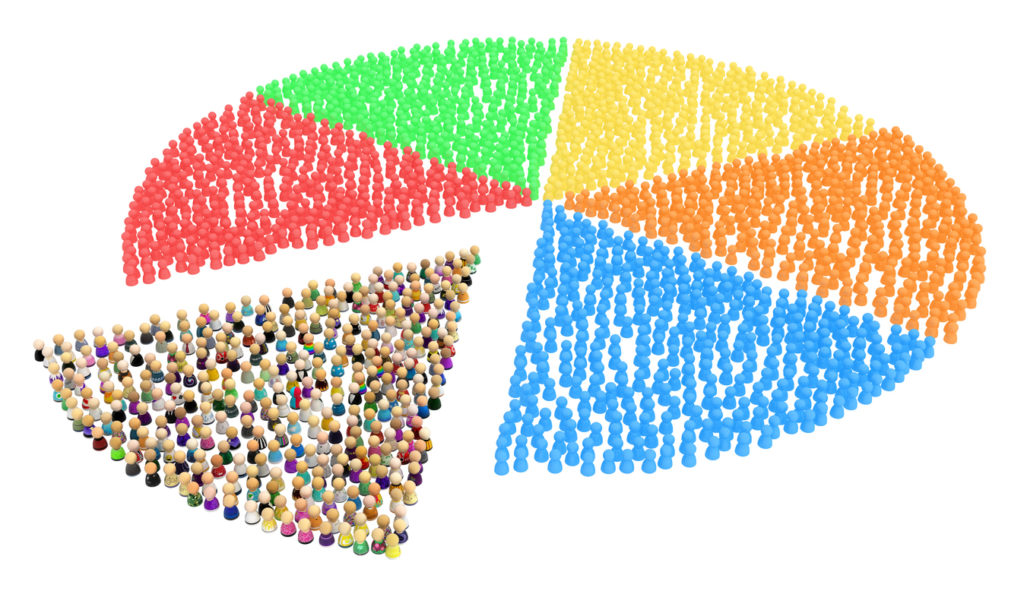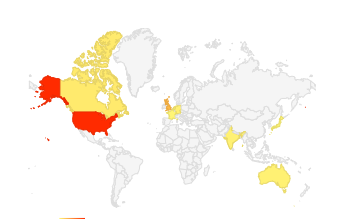Earlier this year, for The Scholarly Kitchen’s 10th Anniversary, my fellow chef Alice Meadows led a survey under the auspices of the Scholarly Kitchen Cabinet (the Society for Scholarly Publishing’s [SSP’s] governing body for the Kitchen) intended to learn more about our readership. Alice published an overview of those findings earlier this year in these pages. The findings helped us to learn more about the composition of our audience as well as how they discover and interact with our work and how well we are meeting their needs. The Kitchen is a volunteer effort on behalf of a professional community, and we take seriously our responsibilities to serve that community’s needs while serving as a vehicle for the self-improvement of that community.

Alice’s analysis found that our survey respondents are representative of the industry in terms of race/ethnicity and gender, which is to say the demographics skew white (87% of respondents, identify as white vs 7% as people of color) and female (61% female, 34% male, 1% another gender). Other than a small number of under 25s and over 65s, respondents were fairly evenly distributed by age: 19.5% are 26-35; 26.5% are 36-45; 25% are 46-55: and 18.5% are 56-65. As we conducted the preliminary survey analysis, we agreed it would also be helpful to examine key subgroups. In providing some stratified analysis by gender, race/ethnicity, and age, it is my goal to see if there are ways to make the Kitchen more inclusive.
Readership
Frequency of reading helps us understand how often an individual chooses to interact with our publications. Respondents report reading the Kitchen with nearly identical frequency regardless of demographic characteristics. When looking at the percentage that read the Kitchen once a week or more often, there are not meaningful differences by gender (males: 72%, females 71%) or by race/ethnicity (white: 71%, POC: 72%). The frequency of daily readership increases with age. Among 26-35 year olds 15% read daily, among 36-45 year olds 23% read daily, among 46-55 year olds 24% read daily, among 56-65 year olds 30% read daily, and among those over 65 years old 55% read daily.
Goals
We sought to assess how well respondents felt the Kitchen was meeting SSP’s goals for it. On several of these goals, is is clear that younger readers (those that fall into the 26-35 and 36-45 age groups) are less likely to think that the Kitchen serves several of these goals very well and more likely to fall into providing a neutral rating, as compared with older readers. These goal areas include: Pointing to research reports and projects and Interpreting the significance of relevant research in a balanced way (or occasionally in a provocative way). When stratified by race/ethnicity, Interpreting the significance of relevant research in a balanced way (or occasionally in a provocative way) has the largest difference, with 63% of respondents of color and 79% of white respondents agreeing that the Kitchen meets this goal.
Balance
We asked about the balance of opinions in a variety of ways. Perhaps most bluntly was the question, Do you feel the current group of chefs provide a good balance of opinions on The Scholarly Kitchen? Here, we see some notable differences. 56% of white respondents agree that the Kitchen Chefs provide a good balance while 47% of respondents of color agree that it does. The 56-65 year olds are most likely to agree (64%), while the 36-45 year olds are least likely (50%).
Takeaways
The analysis here should be read as an expansion on the analysis that Alice already provided in her post this summer. Based on demographic stratifications, it seems possible that the Kitchen has been better serving older readers than younger ones. It seems that our goal to Interpret the significance of relevant research in a balanced way (or occasionally in a provocative way) has been achieved more effectively not just for older readers but also for white readers than it has been for younger readers and people of color.
The complete dataset is available for download, as are the cross-tabs on which this post was based, to allow anyone to conduct additional stratified analysis.
The Kitchen has been working to address the issues raised in the survey:
- We continue to expand the group of Chefs to bring in additional voices and to re-balance the group and its perspectives.
- We will soon be adding a new Chef whose focus will be on “educational” posts to help early career professionals, in particular, get up to speed with topics in scholarly communication.
- We are bringing on several early career professionals to write and commission content that is especially relevant for them and their peers.
- We continue to solicit and actively seek guest blog posts among those who have a perspective to contribute but may not wish to take on responsibility for regular writing, and indeed we have broadened the voices in the Kitchen significantly this year. Already this year, we have published more guest posts than in any previous year, 45 out of a total of 228 posts on the site (to date), which is approaching 20%. This is a tangible illustration that the Kitchen is actively reaching out and gaining better representation from the community.
What else do you make of these findings? What other tangible suggestions for improvement can you suggest?
And — are you interested in contributing? Please write directly to us with your ideas.
It is a continuous project to improve the Kitchen and the service we seek to provide our community. Please join us.
I thank Alice Meadows for her leadership with this survey and her encouragement that I complete this analysis and my colleague Melissa Blankstein for preparing the cross-tabs on which this analysis is based.
Discussion
3 Thoughts on "The Scholarly Kitchen’s Readership Survey: Demographic Analysis"
Please bring voices from the supply side of publishing, i.e. typesetting, production providers – who mainly are based in India, Philippines etc. What challenges do they face? Any myth-busting they can help with? Innovations from their side which we should know about?
Only when voices are heard from all sides of the industry, shall we gain 360-degree knowledge about our work.
This would be a great perspective to add. If you have any specific individuals to nominate — perhaps for a guest post, to begin with? — please feel free to get in touch with me directly or scholarlykitchen@sspnet.org.
Why not start with inviting the CEOs/COOs of SPi Global, SPS, Crest (now SNTPS), Manipal Digital Systems, vTex. They’re all on LinkedIn.



